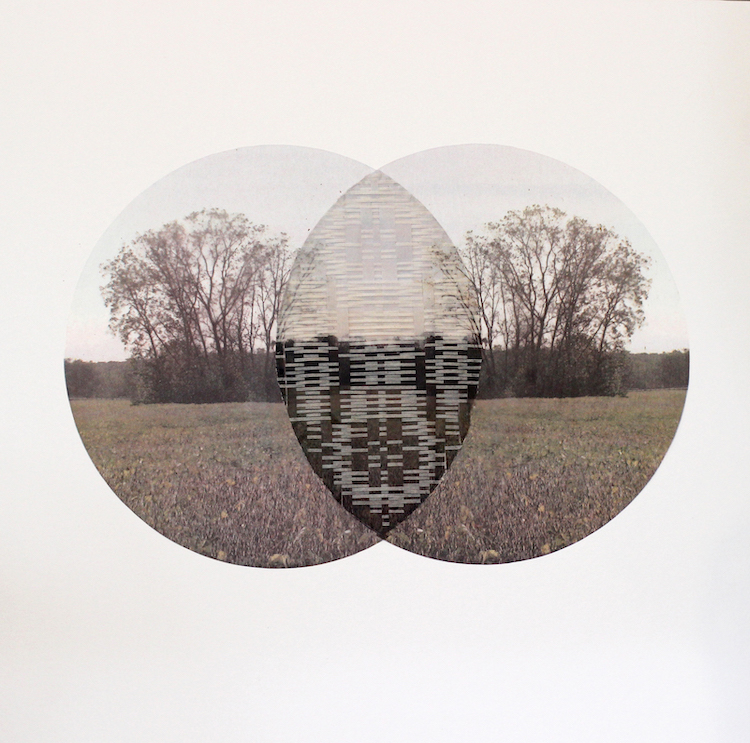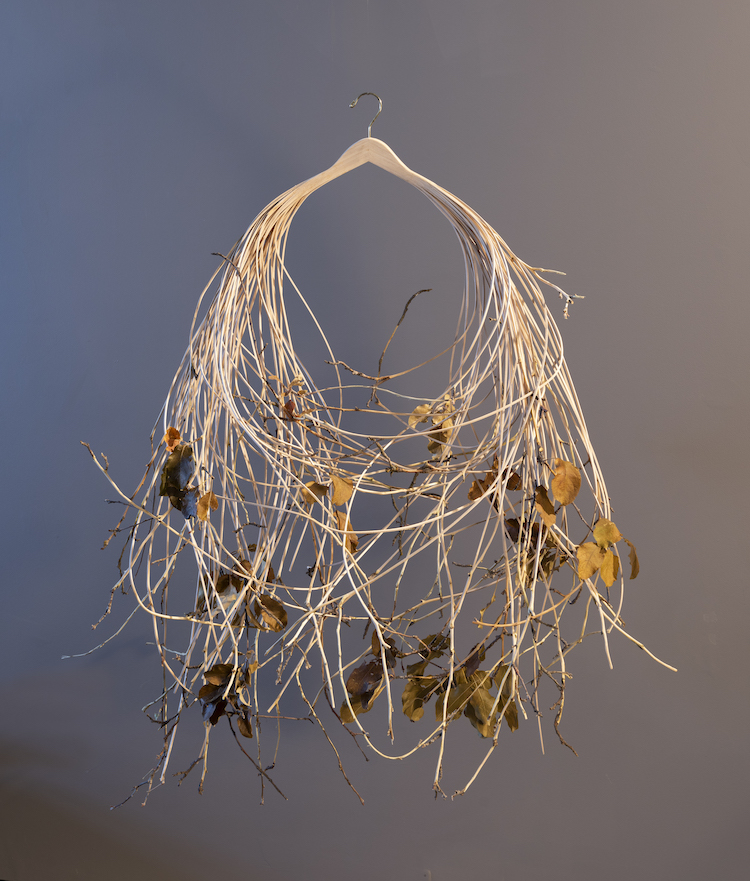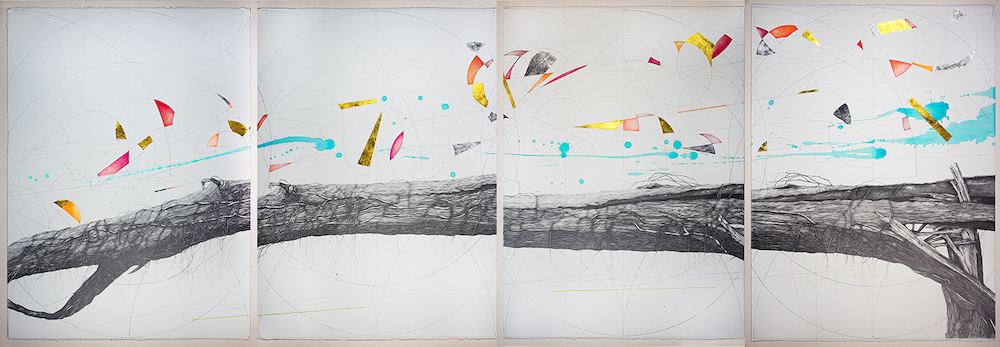Featuring two recently-represented artists Jim Jacobs and Anna Laurie Mackay alongside longstanding represented artist Kiki Gaffney, Modern West is excited to present INTERWOVEN. The exhibition will be on through November 4, 2022
INTERWOVEN brings together works from three artists who intricately examine organic matter and form — from root to decomposition, and our relations to natural systems.
Kiki Gaffney’s work studies the translation from natural patterns and structures such as trees to our societal relianceon grid-systems and geometric design. Interested in the slow cycle of growth and decay, as well as the spontaneity of movement via elements of time, wind, or light and shadow, her work is about observations of these natural and human-designed systems, and ultimately the link between.
Grafting wood with everyday-material forms like chairs, tables, and clothing hangers, Jim Jacobs explores wood as a metaphor for us. He writes, “Natural tree limbs are joined to milled lumber, wooden tools, furniture, and human hair. I refer to these fusions as grafts. In the traditional sense, grafting is a process used to join two distinct plants, often trees, to make them more productive. In my works, these grafted combinations—gangly, elegant, contrived, fragile, and at times self-destructive — are reflections on our peculiar relationship with the rest of the natural world.”
Anna Laurie Mackay’s tissue paper works construct and fragment natural landscapes the artist is familiar with. Conceptually, her work focuses on how she navigates the spaces she inhabits. “I find myself continually compelled to investigate my surroundings and my memories, perceptions and connections to the physical spaces I occupy, whether that is the space of the house or the landscapes surrounding me,” she writes.
Through using charred graphite to examine decaying wood, grafting wood into domestic objects, and weaving tissue paper into landscape, each of these artists inspired by the environment push their processes — realizing organic forms as reflections of our human lives, our roots, growth, and impermanence. As we adapt to consider the structures we adopt from natural systems, the work of these three artists asks us as viewers to confront that we are not separate from natural structures and ecological patterns, but interwoven with them.








